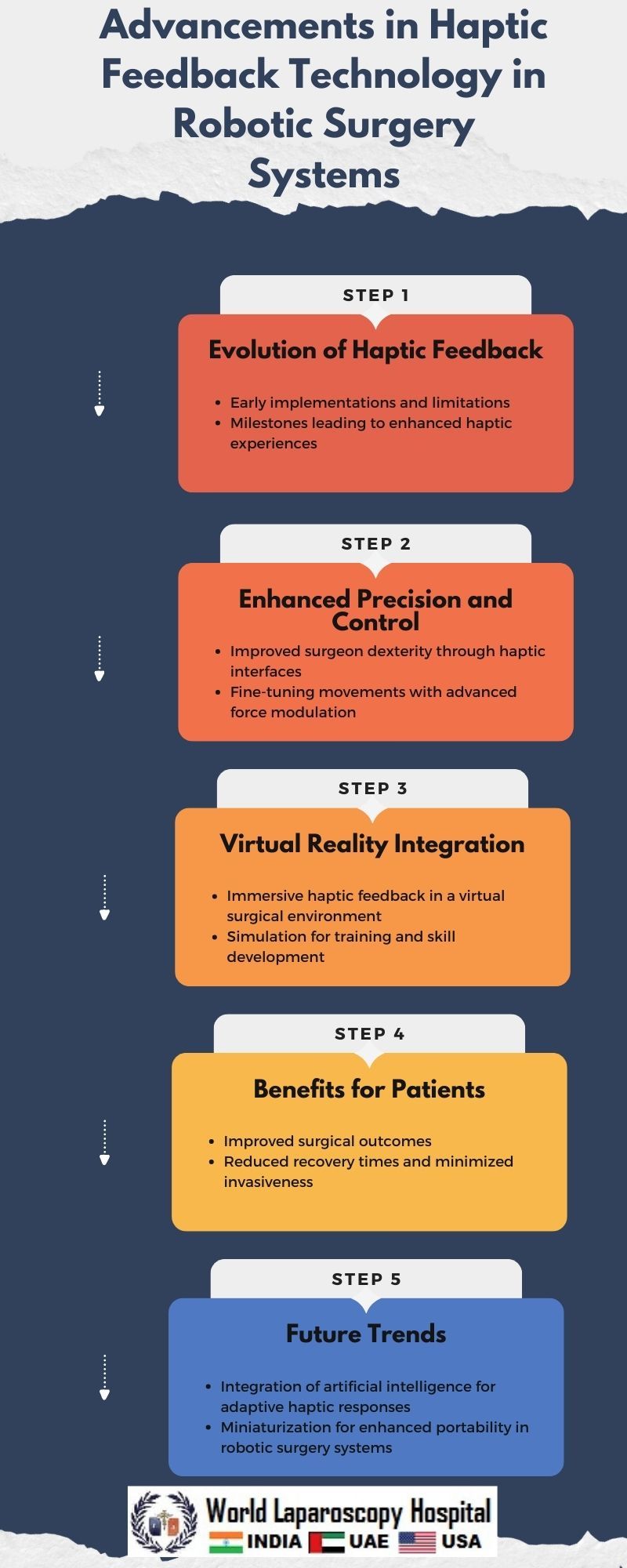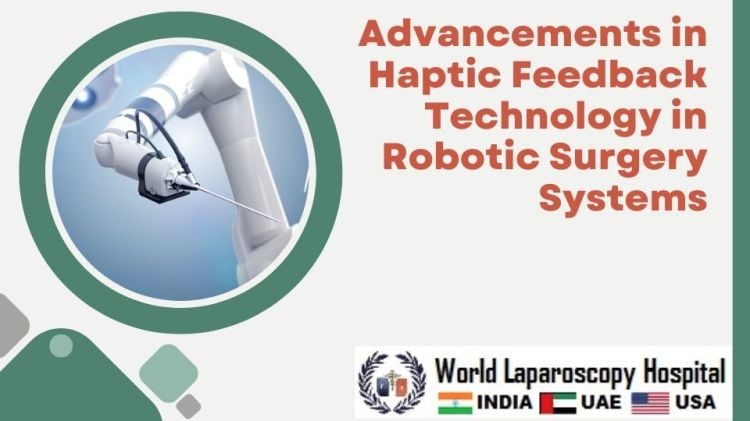Advancements in Haptic Feedback Technology in Robotic Surgery Systems
Introduction:
In the realm of medical technology, the integration of robotics has ushered in a new era of precision and efficiency. One key element driving this transformation is the continuous evolution of haptic feedback technology in robotic surgery systems. Haptic feedback, which simulates the sense of touch and force, has emerged as a crucial component in enhancing a surgeon's capabilities during minimally invasive procedures. This article explores the groundbreaking advancements in haptic feedback technology, their impact on robotic surgery, and the future implications for medical interventions.

The Evolution of Robotic Surgery:
Robotic surgery has witnessed remarkable growth since its inception. Initially introduced to overcome the limitations of traditional open surgery, robotic systems have become integral in performing minimally invasive procedures. The da Vinci Surgical System, a pioneer in this field, introduced a new era by providing surgeons with enhanced visualization and dexterity through robotic arms controlled by a console. However, the absence of realistic touch feedback remained a challenge.
Understanding Haptic Feedback:
Haptic feedback involves the use of technology to simulate the sense of touch and force, allowing users to feel sensations in a virtual environment. In robotic surgery, haptic feedback aims to replicate the tactile sensations experienced during open surgery, providing surgeons with a more immersive and precise experience. This technology relies on force sensors, actuators, and sophisticated algorithms to recreate the feel of tissues, organs, and surgical instruments.
Advancements in Haptic Feedback Technology:
Realistic Force Sensation:
Recent advancements in haptic feedback technology have focused on delivering realistic force sensations to surgeons. Force sensors integrated into robotic instruments can now measure the amount of pressure exerted during interactions with tissues. This information is then translated into force feedback, enabling surgeons to perceive the resistance encountered and adjust their movements accordingly.
Tactile Sensation Replication:
The replication of tactile sensations is another frontier in haptic feedback technology. Researchers and engineers have developed systems that mimic the feel of different tissues, allowing surgeons to differentiate between soft and firm structures. This advancement is crucial for procedures where tissue consistency plays a vital role, such as identifying tumors or navigating delicate structures.
Improved Precision and Dexterity:
Enhanced haptic feedback contributes to improved precision and dexterity in robotic surgery. Surgeons can now execute intricate maneuvers with a heightened sense of control, reducing the risk of errors. The ability to "feel" the surgical environment enhances hand-eye coordination, making it easier to perform complex tasks that require fine motor skills.
Impact on Surgical Training and Skill Development:
Haptic feedback technology has revolutionized surgical training by providing a realistic simulation of surgical procedures. Surgeons in training can practice and refine their skills in a controlled environment, experiencing the tactile nuances of different surgical scenarios. This not only accelerates the learning curve but also ensures that surgeons enter the operating room with a higher level of proficiency.
Simulation-Based Learning:
Simulation-based learning platforms equipped with advanced haptic feedback technology offer a risk-free environment for surgeons to practice various procedures. These simulations can replicate the challenges of real surgeries, allowing trainees to develop the necessary skills and confidence before performing procedures on actual patients.
Skill Transferability:
The skills acquired through haptic feedback-enhanced simulations are highly transferable to real-world scenarios. Surgeons can familiarize themselves with specific instruments, refine their techniques, and develop a comprehensive understanding of anatomical variations, ultimately leading to improved patient outcomes.
Challenges and Future Directions:
Despite the significant progress in haptic feedback technology, challenges persist. Achieving a perfect replication of the complex and diverse sensations encountered in surgery remains a formidable task. Researchers are actively working on addressing issues such as latency, fidelity, and the integration of multimodal feedback to create a more immersive experience.
Latency and Fidelity:
Reducing latency—the delay between an action and its corresponding feedback—and enhancing fidelity—the accuracy of the simulated sensations—are ongoing challenges. Minimizing latency is crucial for real-time responsiveness, while improving fidelity ensures that surgeons experience a true representation of the surgical environment.
Multimodal Feedback Integration:
The integration of multimodal feedback, combining visual, auditory, and haptic cues, is a promising avenue for enhancing the overall surgical experience. This approach aims to create a more holistic and immersive environment for surgeons, allowing them to rely on multiple senses to gather information and make informed decisions during procedures.
Patient-Specific Haptic Profiles:
Customizing haptic feedback based on individual patient characteristics is an emerging frontier. Tailoring the tactile sensations to match the specific anatomical features of each patient could further enhance the surgeon's ability to navigate variations in tissue density and structure, ultimately personalizing the surgical experience.
Ethical Considerations and Patient Safety:
As haptic feedback technology continues to advance, ethical considerations and patient safety must be paramount. Ensuring that surgeons are adequately trained and that the technology meets rigorous safety standards is essential. Additionally, transparent communication with patients regarding the use of robotic surgery and haptic feedback is crucial to building trust and ensuring informed consent.
Conclusion:
The advancements in haptic feedback technology in robotic surgery systems represent a paradigm shift in the field of minimally invasive surgery. Surgeons now have the ability to not only visualize but also feel the intricacies of the surgical environment, leading to enhanced precision and improved patient outcomes. As technology continues to evolve, the integration of haptic feedback is poised to redefine the landscape of surgical practice, opening new possibilities for medical interventions and pushing the boundaries of what is achievable in the realm of robotic surgery.



